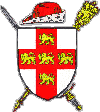


|
|
 |
Tagiamonte (2001) suggests that come / came variation is not only one of the most well-known non-standard characteristics of English dialect but, compared to other English verbs, come is one of the most frequently used and is one which regularly displays a higher level of nonstandard usage. She goes on to say that the nonstandard variability manifested in York English is identical to that described in dialects of North America.
Historical Aspect
From her own findings and the content of historical literature, Tagiamonte (2001) concludes that come / came variation arises out of the "relatively late development of came in the history of English". In effect, came first appeared only in the northern forms of Middle English (the language of Chaucer) sometime around the 13th or 14th century and, as suggested by the Oxford English Dictionary, didn't completely oust come from the southern and midland dialects until the 15th century. Tagiamonte cites the following examples (ž is the Old English character "thorn" which equates to present-day "th"):
(1) Žer come to me a fair knightes
(2) And to že cherche porche he cam - c. 1300 (Sisam 1970:6)
(3)With hem com mani champioun
(4) Žat he ne kam žider že leyk to se - early 13th century (Dickens and Wilson, 1969: 38-9)
Contemporary York English
With regard to contemporary York English, the following are some examples from Tagliamonte's data:
Male, age 91
(5) Yeah, well war come out they pulled me in.
(6) When I came home that day, it was a different world.
Female, age 81
(7) Anyway eventually she come back and it all got sorted out.
(8) But he never did stay out one night, he always came home.
Female, age 20
(9) She was like, taking the piss out of them, but she come back.
(10) But she went last year and then left after a term and came back.
Male, age 20
(11) And they were supposed to be there a day before they come home.
(12) She's been at university like for three years and she came back and tossed it off for a year or two.
Research Findings
From her data, Tagliamonte observes that, among other things, that:
- In York, the younger generation employ past reference come (henceforth PRC) with the same degree of frequency as, and possibly more than, the oldest age group.
- Within the older generation, the probability of PRC usage is higher with verbal particles (e.g. up, down, out, back etc.) Compare (5) and (7) above with (10) and (12)
- PRC appears more often with 1st and 3rd person singular subjects (i.e. I, he, she, and it). See (7) and (9) above.
Concerning the last item, Tagliamonte views this as "consistent with earlier reports of patterns of behaviour for come and came in the history of English dialects". She cites Morris (1911: 14) who linked this leaning towards the use of PRC to the Old Norse form of the preterite singular, kom. She further suggests that the tendency towards its use among the older speakers of York English may be due to a residual effect of an earlier regional dialect and the influence of the Scandinavian languages (through a large-scale association with Danish and Norwegian settlers in past centuries. (See The Historical Development Of Yorkshire Dialect).
Tagliamonte speculates that " the specific geographic location of York .. may have favoured [PRC] for 1st and 3rd person subjects, at least within the vernacular norms, up until the middle of the 20th century". Questioning why PRC is retained not only in York English but in all English dialects, Tagliamonte suggests that its usage has been reinforced "by a convergence of a number of factors". She proposes that the following may have had some influence:
- The high degree to which the verb come is commonly used in English.
- The popular endorsement of the nonstandard canonical form
- PRC has become a marker of social identity.
- The historical development of the verb.
In relation to the last, Tagliamonte adds that PRC, as the original form, continued to be widespread in written documents "from midland and southern dialects of England until the 16th century" whilst came appeared later.
References
Dickens,B. and Wilson, R. M. (1969) Early Middle English Texts, Cambridge: Bowes and Bowes.
Morris, M. C. F. (1911) Yorkshire Folk-Talk: With Characteristics of Those Who Speak it in the North and East Ridings, London: Brown.
Sisam, K. (1970) Fourteenth Century Verse and Prose, Oxford: Clarendon Press.
Tagliamonte, S. (2001) Come / came variation in English Dialects. American Speech, 76(1): 42-61.
| Preterite: the simple past tense form of a verb, e.g.: had, did, said, worked etc. |
| Vernacular norm: type, pattern or style of language or dialect employed by the indigenous inhabitants of a community or, to use Labov's (1972: 208) definition, "the style in which the minimum attention is given to the monitoring of speech". |
| Canonical form: a linguistic element generally perceived to be the standard form. For example, English plurals can end in -en (children), -es (fishes), -s (cars) etc.; -s is considered to be the canonical form. |